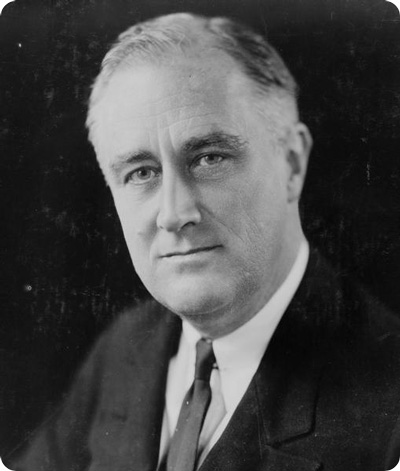The Forgotten Man - an early history of the BoP

Although a bottom of the pyramid has likely existed throughout the history of commerce, probably the earliest uses of the phrase “bottom of the economic pyramid” was by Franklin D. Roosevelt during his bid for the Democratic nomination for U.S. President. In a radio address on April 7, 1932, titled The Forgotten Man, Roosevelt stated:
These unhappy times call for the building of plans that rest upon the forgotten, the unorganized but the indispensable units of economic power...that build from the bottom up and not from the top down, that put their faith once more in the forgotten man at the bottom of the economic pyramid.
Roosevelt was referring especially to the plight of American farmers during the Great Depression, illustrating a cycle connecting the plight of farmers and the plight of the urban industrial:
The result of this loss of purchasing power is that many other millions of people engaged in industry in the cities cannot sell industrial products to the farming half of the Nation. This brings home to every city worker that his own employment is directly tied up with the farmer's dollar. No Nation can long endure half bankrupt. Main Street, Broadway, the mills, the mines will close if half the buyers are broke. I cannot escape the conclusion that one of the essential parts of a national program of restoration must be to restore purchasing power to the farming half of the country. Without this the wheels of railroads and of factories will not turn.
At the time of Roosevelt's address, most American companies were focused on domestic sales, having made few inroads into foreign markets: thus Roosevelt's focus on the domestic poor's purchasing power as integral part of the economy. However over the next several decades as global trade barriers fell, American companies began to reach out to other parts of the world. Initially this was to open up markets in other developed nations, but companies also began moving manufacturing operations in the developing world where cheaper sources of labor were available. Even with a local manufacturing presence, most of these companies focused on exporting products to richer markets; when they did sell within the local market, it was primarily to the economic elite or slowly growing middle class.
By in large, those at the bottom of the economic pyramid were not seen as worthwhile consumers: it was common that a company's own workers couldn't afford the products they made. Worse, the cross-borders nature of global business made the vicious cycle Roosevelt had described much harder to see. After all, the engines of global growth and the markets that sustained them rarely seemed to intersect with the bottom of the economic pyramid, and for years it appeared that global society could not only endure, but thrive, despite being much more than half bankrupt.
At 4 billion people and growing, Roosevelt's "Forgotten Man" was now one of the world's greatest demographics, with poverty cutting across all nationalities, ethnicities, and geographies. Yet our world's greatest businesses had little will to serve this hugely under-served, and increasingly forgotten, population.
- A Call to Fortune - the work of Stuart Hart and CK Prahalad
- Criticisms and Developments - Criticisms and developments in the BoP



